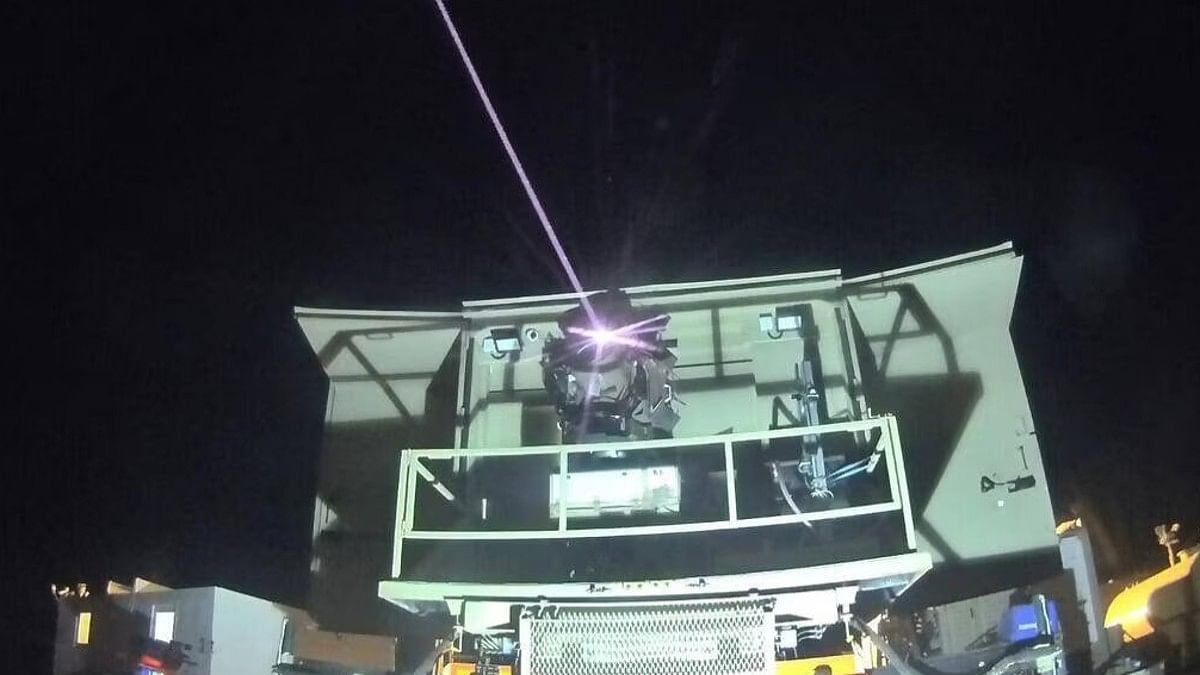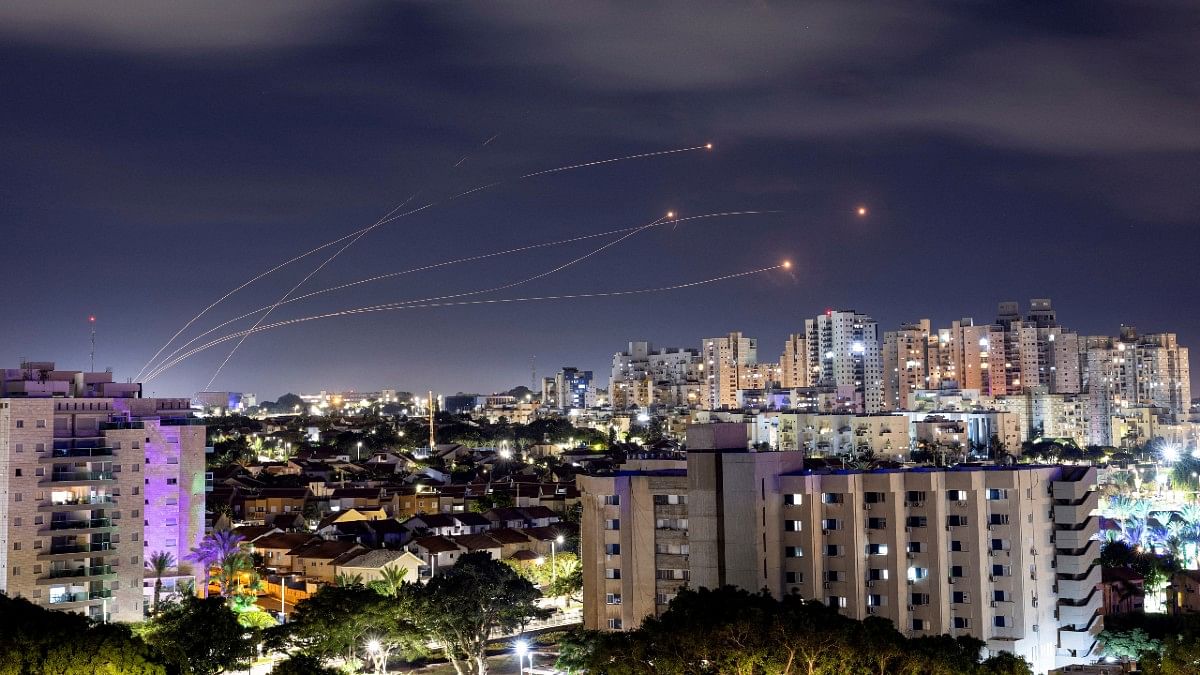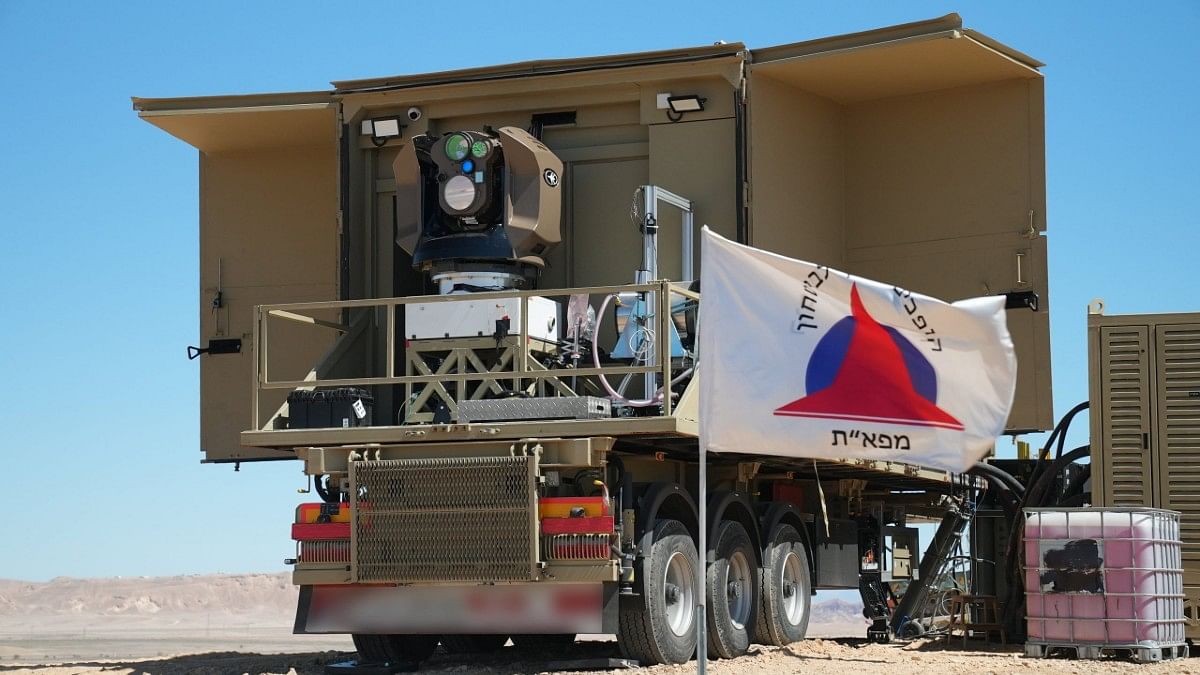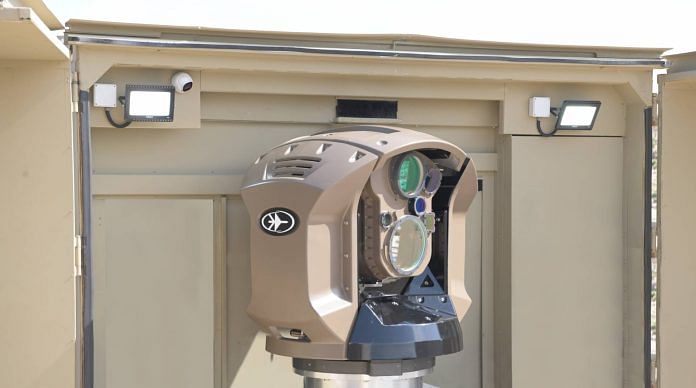New Delhi: Looking to shore up its defences against the barrage of rockets launched by Hamas from Gaza and Lebanon-based Hezbollah, Israel may now be considering fast-tracking the deployment of the Iron Beam missile defence system, developed by the Israeli company Rafael, to shore up its aerial defences.
Once fully operational, the Iron Dome will become the fifth element of Israel’s integrated missile defence system, joining Arrow 2, Arrow 3, David’s Sling and the Iron Dome.
Rafael’s 100-kilowatt Iron Beam is designed to neutralise rockets, artillery, and mortars (RAM), besides unmanned aerial systems (UAS), counter-unmanned aerial systems (C-UAS) and anti-tank missiles. It can function by itself or be integrated with other, broader defence systems.
On its website, Rafael Advanced Defense Systems says the Iron Beam can “neutralise a wide range of threats with pinpoint accuracy and protect military forces and civilian populations”, adding that it is designed to ensure “limited collateral damage”.

Michael Lurie, vice president and head of the land manoeuvre systems directorate at Rafael, and CEO of Rafael USA, told the news portal Janes last year, “We think the system will be the first operational high-energy laser system, not because we’re the most advanced technologically…There are other US companies and probably other countries that are technologically very developed, but (Israel has) a very urgent need.”
The report added that the development of this new laser weapon was aimed at “creating a capability that is complementary to the fielded Iron Dome system”. An air defence system operational since 2011, the Iron Dome has shielded the Israeli population from rockets for more than a decade, even clocking a success rate of up to 90 percent.
“The command-and-control is Iron Dome. The detection is Iron Dome. The decision-making is Iron Dome (for) shoot, don’t shoot, and what to shoot,” Lurie told Janes.

He added that the Iron Beam is not a replacement for the Iron Dome but complementary to it since there are few scenarios where the laser-based missile defence system may face operational challenges. For instance, during foggy weather or when it’s raining.
In the ongoing conflict, Israel has relied on the Iron Dome to intercept the hundreds and sometimes thousands of missiles launched into Israeli territory by Hamas and Hezbollah.
However, since the Iron Dome system requires interceptor missiles, Israel Defence Forces (IDF) have reportedly begun testing for the Iron Beam system, which is a directed energy weapon (DEW) air defence system.
‘Easier to move & conceal’
Unveiled at the Singapore Airshow by Rafael in February 2014, the Iron Beam was slated to become operational by 2025, but Israel is now reportedly expediting its deployment to make it operational much sooner.
The Iron Beam is “smaller and lighter than the Iron Dome, which makes it easier to move and to conceal”, reported The Telegraph, adding that since the laser-based missile defence system does not require ammunition, fluctuations in the global supply chain would not be of concern.
Another benefit of using a DEW system is that it is cost-effective, since it does not require missiles to counter hit the incoming object. This system also requires lower operational costs and limited manpower to operate it.

Iron Beam uses a fibre laser to generate a laser beam to destroy an airborne target. Its battery is reportedly composed of an air defence radar, a command and control (C2) unit, and two High Energy Laser (HEL) systems.
The two laser guns can produce 100-150 kw of power in a single second.
Further, the system has a range of up to 7 km and is designed to destroy a target within four seconds of the twin high-energy fibre optic lasers making contact with it. The high-energy laser focuses a beam or several beams of energy to blind, cut or inflict heat damage on the target.
In 2020, the system demonstrated an effective range of 7 km while swiftly neutralising missiles, UAVs and mortar shells within seconds of target engagement. Reports in the media also suggest that plans are underway to increase energy levels.
Uzi Rubin, a missile defence expert at the Israeli Ministry of Defence was quoted by The Telegraph as saying that “the cost of kill (for the Iron Beam) is small”. Rubin explained that instead of the interceptors fired by Iron Dome, which can cost $60,000 each, a laser beam costs only a few dollars.
(Edited by Amrtansh Arora)
Also Read: What’s ATACMS — missile that ‘performed brilliantly’ in Desert Storm, now supplied by US to Ukraine



